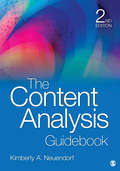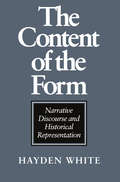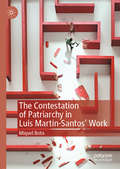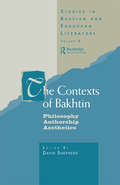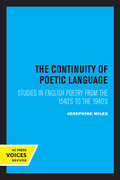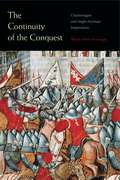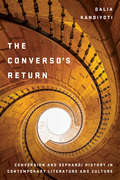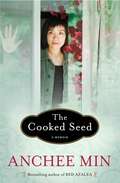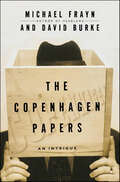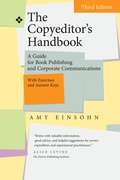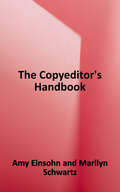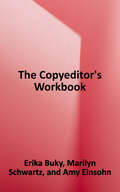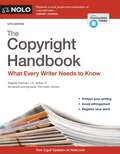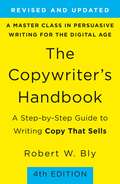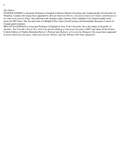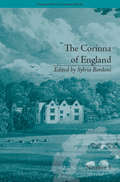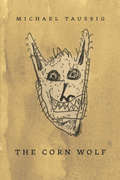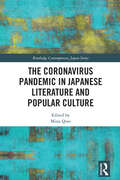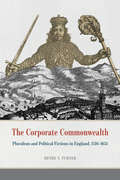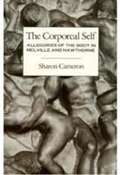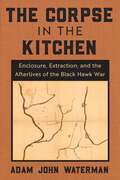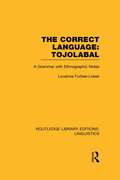- Table View
- List View
The Content Analysis Guidebook
by Kimberly A. NeuendorfContent analysis is one of the most important but complex research methodologies in the social sciences. In this thoroughly updated Second Edition of The Content Analysis Guidebook, author Kimberly Neuendorf draws on examples from across numerous disciplines to clarify the complicated aspects of content analysis through step-by-step instruction and practical advice. Throughout the book, the author also describes a wide range of innovative content analysis projects from both academia and commercial research that provide readers with a deeper understanding of the research process and its many real-world applications.
The Content Analysis Guidebook
by Kimberly A. NeuendorfContent analysis is one of the most important but complex research methodologies in the social sciences. In this thoroughly updated Second Edition of The Content Analysis Guidebook, author Kimberly Neuendorf draws on examples from across numerous disciplines to clarify the complicated aspects of content analysis through step-by-step instruction and practical advice. Throughout the book, the author also describes a wide range of innovative content analysis projects from both academia and commercial research that provide readers with a deeper understanding of the research process and its many real-world applications.
The Content of the Form: Narrative Discourse and Historical Representation
by Hayden WhiteHayden White probes the notion of authority in art and literature and examines the problems of meaning—its production, distribution, and consumption—in different historical epochs. In the end, he suggests, the only meaning that history can have is the kind that a narrative imagination gives to it. The secret of the process by which consciousness invests history with meaning resides in "the content of the form," in the way our narrative capacities transform the present into a fulfillment of a past from which we would wish to have descended.
The Contestation of Patriarchy in Luis Martín-Santos' Work
by Miquel BotaThis book proposes that Spanish author Luis Martín-Santos’ work focuses on the effects of patriarchy and hegemonic masculinity on men, to actively contribute to freeing both men and women from the yoke of patriarchy. It aims for a new resonance of Luis Martín-Santos. It analyzes the influence of Heidegger, Freud and Sartre in Martín-Santos’ psychiatric essays and his fictional works: the novel Tiempo de silencio (Time of Silence), the collection of short stories Apólogos, and the posthumous fragment Tiempo de destrucción (Time of Destruction). It demonstrates that alongside the political critique of Franco’s dictatorship, Martín-Santos’ creative writings are an attempt to destroy the prevalent masculine myths of Western patriarchy, and a proposal to create new myths for the future.
The Contexts of Bakhtin: Philosophy, Authorship, Aesthetics (Routledge Harwood Studies in Russian and European Literature #Vol. 2.)
by David Shepherd Professor David ShepherdThe fourteen essays collected in this volume, notwithstanding their diversity of subject matter and approach, share a concern with the contexts to which we need to refer in order to understand not only the origins, but also the potential of Mikhail Bakhtin's thought: contexts both immediate and oblique, personal and impersonal, intellectual and theoretical. Five of the essays are by well-known Russian scholars whose work on Bakhtin has not previously been translated in English; the other nine papers are by established and emerging Bakhtin specialists in North America, the United Kingdom, and Europe.
The Continental Drift Controversy
by Henry R. FrankelResolution of the sixty-year debate over continental drift, culminating in the triumph of plate tectonics, changed the very fabric of Earth science. This four-volume treatise on the continental drift controversy is the first complete history of the origin, debate and gradual acceptance of this revolutionary theory. Based on extensive interviews, archival papers and original works, Frankel weaves together the lives and work of the scientists involved, producing an accessible narrative for scientists and non-scientists alike. This fourth volume explains the discoveries in the mid 1960s which led to the rapid acceptance of seafloor spreading theory and how birth of plate tectonics followed soon after with the geometrification of geology. Although plate tectonics did not explain the cause or dynamic mechanism of drifting continents, it provided a convincing kinematic explanation that continues to inspire geodynamic research to the present day.
The Continuity of Poetic Language: Studies in English Poetry from the 1540's to the 1940's
by Josephine MilesThis title is part of UC Press's Voices Revived program, which commemorates University of California Press’s mission to seek out and cultivate the brightest minds and give them voice, reach, and impact. Drawing on a backlist dating to 1893, Voices Revived makes high-quality, peer-reviewed scholarship accessible once again using print-on-demand technology. This title was originally published in 1951.
The Continuity of the Conquest: Charlemagne and Anglo-Norman Imperialism
by Wendy Marie HoofnagleThe Norman conquerors of Anglo-Saxon England have traditionally been seen both as rapacious colonizers and as the harbingers of a more civilized culture, replacing a tribal Germanic society and its customs with more refined Continental practices. Many of the scholarly arguments about the Normans and their influence overlook the impact of the past on the Normans themselves. The Continuity of the Conquest corrects these oversights. Wendy Marie Hoofnagle explores the Carolingian aspects of Norman influence in England after the Norman Conquest, arguing that the Normans’ literature of kingship envisioned government as a form of imperial rule modeled in many ways on the glories of Charlemagne and his reign. She argues that the aggregate of historical and literary ideals that developed about Charlemagne after his death influenced certain aspects of the Normans’ approach to ruling, including a program of conversion through “allurement,” political domination through symbolic architecture and propaganda, and the creation of a sense of the royal forest as an extension of the royal court. An engaging new approach to understanding the nature of Norman identity and the culture of writing and problems of succession in Anglo-Norman England, this volume will enlighten and enrich scholarship on medieval, early modern, and English history.
The Converso's Return: Conversion and Sephardi History in Contemporary Literature and Culture (Stanford Studies in Jewish History and Culture)
by Dalia KandiyotiFive centuries after the forced conversion of Spanish and Portuguese Jews to Catholicism, stories of these conversos' descendants uncovering long-hidden Jewish roots have come to light and taken hold of the literary and popular imagination. This seemingly remote history has inspired a wave of contemporary writing involving hidden artifacts, familial whispers and secrets, and clandestine Jewish ritual practices pointing to a past that had been presumed dead and buried. The Converso's Return explores the cultural politics and literary impact of this reawakened interest in converso and crypto-Jewish history, ancestry, and identity, and asks what this fascination with lost-and-found heritage can tell us about how we relate to and make use of the past. Dalia Kandiyoti offers nuanced interpretations of contemporary fictional and autobiographical texts about crypto-Jews in Cuba, Mexico, New Mexico, Spain, France, the Ottoman Empire, and Turkey. These works not only imagine what might be missing from the historical archive but also suggest an alternative historical consciousness that underscores uncommon convergences of and solidarities within Sephardi, Christian, Muslim, converso, and Sabbatean histories. Steeped in diaspora, Sephardi, transamerican, Iberian, and world literature studies, The Converso's Return illuminates how the converso narrative can enrich our understanding of history, genealogy, and collective memory.
The Cooked Seed: A Memoir
by Anchee MinMin returns to the story of her own life to give us the next chapter, an immigrant story that takes her from the shocking deprivations of her homeland to the sudden bounty of the promised land of America, without language, money, or a clear path.
The Copenhagen Papers: An Intrigue
by Michael Frayn David BurkeIn a brilliant coda to the play Copenhagen, Michael Frayn receives mysterious letters that take him back to the theme of his bestselling novel, Headlong -- human folly, this time his own.Michael Frayn's Copenhagen has established itself as one of the finest pieces of drama to grace the stage in recent years. The subject of the Tony-winning play is the strange visit the German nuclear physicist Werner Heisenberg made to his former mentor, scientist Niels Bohr, in Nazi-occupied Copenhagen and the quarrel that ensued. Heisenberg's intentions on that visit, for good or for evil, have long intrigued and baffled historians and scientists. One day, during the British run of Copenhagen, Frayn received a curious package from a suburban housewife, which contained a few faded pages of barely legible German writings. These pages, which she claimed to have found concealed beneath her floorboards, seemed to cast a remarkable new light on the mystery at the heart of play. As more material emerged -- specifically notes that appeared to give instructions on how to put up a table-tennis table but perhaps containing important encoded information -- actor David Burke, who was playing Niels Bohr, began to display extreme, even suspicious interest in Frayn's growing obsession with cracking the riddle of the papers. And Frayn, for his part, lost all sense of certainty. Was he the victim of an elaborate hoax? By turns comic and profound, The Copenhagen Papers explores the conundrum that is always at the heart of Frayn's work -- human gullibility and the eternal difficulty of knowing why we do what we do.
The Copyeditor's Handbook: A Guide For Book Publishing And Corporate Communications With Exercises And Answer Keys
by Amy EinsohnUnstuffy, hip, and often funny, The Copyeditor’s Handbook: A Guide for Book Publishing and Corporate Communications has become an indispensable resource both for new editors and for experienced hands who want to refresh their skills and broaden their understanding of the craft of copyediting. <P><P>This third edition incorporates the latest advice from language authorities, usage guides, and new editions of major style manuals, including The Chicago Manual of Style. It registers the tectonic shifts in twenty-first-century copyediting: preparing text for digital formats, using new technologies, addressing global audiences, complying with plain language mandates, ensuring accessibility, and serving self-publishing authors and authors writing in English as a second language. <P><P>The new edition also adds an extensive annotated list of editorial tools and references and includes a bit of light entertainment for language lovers, such as a brief history of punctuation marks that didn’t make the grade, the strange case of razbliuto, and a few Easter eggs awaiting discovery by keen-eyed readers. <P><P> The Copyeditor’s Workbook: Exercises and Tips for Honing Your Editorial Judgment—a new companion to the Handbook—offers comprehensive and practical training in the art of copyediting for both aspiring and experienced editors. More than forty exercises of increasing difficulty and length, covering a range of subject matter, enable you to advance in skill and confidence. <P><P>Detailed answer keys and explanations offer a grounding in editorial basics, appropriate usage choices for different contexts and audiences, and advice on communicating effectively and professionally with authors and clients. Whether the exercises are undertaken alone or alongside the new edition of The Copyeditor’s Handbook, they provide a thorough workout in the essential knowledge and skills required of contemporary editors.
The Copyeditor's Handbook: A Guide for Book Publishing and Corporate Communications
by Amy Einsohn Marilyn SchwartzThe new, updated edition of the handbook that should be on every copyeditor's desk. Unstuffy, hip, and often funny , The Copyeditor's Handbook has become an indispensable resource both for new editors and for experienced hands who want to refresh their skills and broaden their understanding of the craft of copyediting. <p><p>This fourth edition incorporates the latest advice from language authorities, usage guides, and new editions of major style manuals, including The Chicago Manual of Style. It registers the tectonic shifts in twenty-first-century copyediting: preparing text for digital formats, using new technologies, addressing global audiences, complying with plain language mandates, ensuring accessibility, and serving self-publishing authors and authors writing in English as a second language. <p><P>The new edition also adds an extensive annotated list of editorial tools and references and includes a bit of light entertainment for language lovers, such as a brief history of punctuation marks that didn't make the grade, the strange case of razbliuto, and a few Easter eggs awaiting discovery by keen-eyed readers. The fourth edition features updates on - the transformation of editorial roles in today's publishing environment - new applications, processes, and protocols for on-screen editing - major changes in editorial resources, such as online dictionaries and language corpora, new grammar and usage authorities, online editorial communities, and web-based research tools. <p><p>When you're ready to test your mettle, pick up The Copyeditor's Workbook: Exercises and Tips for Honing Your Editorial Judgment, the essential new companion to the handbook.
The Copyeditor's Workbook: Exercises and Tips for Honing Your Editorial Judgment
by Amy Einsohn Erika Buky Marilyn SchwartzPut your editing skills into practice with this new companion to the handbook on every copyeditor's desk. The Copyeditor's Workbook—a companion to the indispensable Copyeditor's Handbook, now in its fourth edition—offers comprehensive and practical training for both aspiring and experienced copyeditors. <p><p>Exercises of increasing difficulty and length, covering a range of subjects, enable you to advance in skill and confidence. Detailed answer keys offer a grounding in editorial basics, appropriate usage choices for different contexts and audiences, and advice on communicating effectively with authors and clients. The exercises provide an extensive workout in the knowledge and skills required of contemporary editors. <p><p>Features and Benefits - Workbook challenges editors to build their skills and to use new tools. Exercises vary and increase in difficulty and length, allowing users to advance along the way. - Answer keys illustrate several techniques for marking copy, including marking PDFs and hand marking hard copy.- Book includes access to online exercises available for download.
The Copyright Handbook
by Stephen Fishman J. D.This must-have handbook for writers and artists provides every necessary form to protect written expression under U. S. and international copyright law. With step-by-step instructions, it illustrates how to: register a written work with the copyright office determine what works can be protected transfer copyright ownership define and avoid infringement maintain electronic publishing rights This edition is completely updated to provide the latest case law and copyright regulations, including updates on all the latest cases and changes to copyright law and on electronic ling.
The Copywriter's Handbook: A Step-By-Step Guide To Writing Copy That Sells (4th Edition)
by Robert W. BlyThe classic guide to copywriting, now in an entirely updated fourth editionThis is a book for everyone who writes or approves copy: copywriters, multichannel marketers, creative directors, freelance writers, marketing managers . . . even small business owners and information marketers. It reveals dozens of copywriting techniques that can help you write both print and online ads, emails, and websites that are clear, persuasive, and get more attention—and sell more products. Among the tips revealed: * 8 headlines that work--and how to use them * The 5-step “Motivating Sequence” for generating more sales and profits * 10 tips for boosting landing page conversion rates * 15 techniques to ensure your emails get high open and click-through rates * How to create powerful “lead magnets” that double response rates * The “4 S” formula for making your copy clear, concise, and compelling This thoroughly revised fourth edition includes all new essential information for mastering copywriting in the digital age, including advice on content marketing, online videos, and high-conversion landing pages, as well as entirely updated resources. Now more indispensable than ever, Robert W. Bly's The Copywriter's Handbook remains the ultimate guide for people who write or work with copy.
The Coquette And The Boarding School (Norton Critical Editions Ser. #0)
by Bryan Waterman Hannah Webster Foster Jennifer HarrisPublished anonymously in 1797, Hannah Webster Foster’s The Coquette grabbed American interest with its ripped-from-the-headlines story of sex and scandal. A steady best seller for decades, the seduction novel was passed down through generations; indeed, its heroine became better known than the book’s author. A year later, Foster’s lesser-known follow-up, The Boarding School, provided an equally compelling portrait of women at the turn of the nineteenth century in the same epistolary form. Both novels can now be read in conversation with each other in this new Norton Critical Edition based on the respective first edition texts; the author’s original spelling, punctuation, and usage are retained while obvious printer’s errors are corrected. The texts are joined with a detailed introduction to Foster’s legacy and Elizabeth Whitman’s life along with explanatory annotations and a note on the text.
The Corinna of England, or a Heroine in the Shade; A Modern Romance: by E M Foster (Chawton House Library: Women's Novels)
by Sylvia BordoniA novel that helps you understand the British reaction to Corinne as well as of its cultural, social and gender implications.
The Corn Wolf
by Michael TaussigCollecting a decade of work from iconic anthropologist and writer Michael Taussig, The Corn Wolf pinpoints a moment of intellectual development for the master stylist, exemplifying the "nervous system" approach to writing and truth that has characterized his trajectory. Pressured by the permanent state of emergency that imbues our times, this approach marries storytelling with theory, thickening spiraling analysis with ethnography and putting the study of so-called primitive societies back on the anthropological agenda as a way of better understanding the sacred in everyday life. The leading figure of these projects is the corn wolf, whom Wittgenstein used in his fierce polemic on Frazer's Golden Bough. For just as the corn wolf slips through the magic of language in fields of danger and disaster, so we are emboldened to take on the widespread culture of academic--or what he deems "agribusiness"--writing, which strips ethnography from its capacity to surprise and connect with other worlds, whether peasant farmers in Colombia, Palestinians in Israel, protestors in Zuccotti Park, or eccentric yet fundamental aspects of our condition such as animism, humming, or the acceleration of time. A glance at the chapter titles--such as "The Stories Things Tell" or "Iconoclasm Dictionary"--along with his zany drawings, testifies to the resonant sensibility of these works, which lope like the corn wolf through the boundaries of writing and understanding.
The Cornerstone Anthology
by Alvin Granowsky Eden Force Eskin John DawkinsA language arts book that lets in the readers to a new world of literature and reading.
The Coronavirus Pandemic in Japanese Literature and Popular Culture (Routledge Contemporary Japan Series)
by Mina QiaoThis volume is the first book-length collection on Japanese literary and popular cultural responses to the coronavirus pandemic in English. Disrupting the narrative of COVID-19 as a catastrophe without precedent, this book contextualizes the COVID-19 global public health crisis and pandemic-induced social and political turbulence in a post-industrial society that has withstood multiple major destructions and disasters. From published fiction by major authors to anonymous accounts on social media, from network TV shows to contents by Virtual YouTubers (VTubers), in both "high" and "low" culturescapes, timely representations of coronavirus and individual and social livings under its impact emerge. These narratives, either personal or top-down, all endeavor to fathom this unexpected disruption of modern linear progress. Exploring the paradoxes underlying the "new normal" of Japanese society of the present day, the book collectively demonstrates how the narratives of coronavirus are not "neo-" but "re-": returning to the past, revealing existing problems and reclaiming memories lost and lessons forgotten. This edited volume will be of interest to researchers and students in the fields of Japanese culture and society, Japanese literature, and pandemic studies.
The Corporate Commonwealth: Pluralism and Political Fictions in England, 1516–1651
by Henry S. TurnerThe Corporate Commonwealth traces the evolution of corporations during the English Renaissance and explores the many types of corporations that once flourished. Along the way, the book offers important insights into our own definitions of fiction, politics, and value. Henry S. Turner uses the resources of economic and political history, literary analysis, and political philosophy to demonstrate how a number of English institutions with corporate associations—including universities, guilds, towns and cities, and religious groups—were gradually narrowed to the commercial, for-profit corporation we know today, and how the joint-stock corporation, in turn, became both a template for the modern state and a political force that the state could no longer contain. Through innovative readings of works by Thomas More, William Shakespeare, Francis Bacon, and Thomas Hobbes, among others, Turner tracks the corporation from the courts to the stage, from commonwealth to colony, and from the object of utopian fiction to the subject of tragic violence. A provocative look at the corporation’s peculiar character as both an institution and a person, The Corporate Commonwealth uses the past to suggest ways in which today’s corporations might be refashioned into a source of progressive and collective public action.
The Corporeal Self: Allegories of the Body in Melville and Hawthorne (Morningside Book)
by Sharon CameronThe Corporeal Self argues that questions about identity, conceived in bodily terms, are not only relevant for Melville and Hawthorne, the two nineteenth-century authors whose works are positioned at opposite extremes of the consideration of human identity, but lie at the heart of the American literary tradition, and have, in that tradition, their own revisionary status.
The Corpse in the Kitchen: Enclosure, Extraction, and the Afterlives of the Black Hawk War
by Adam John WatermanReassessing the archive of the Black Hawk War, The Corpse in the Kitchen explores relationships between the enclosure of Indigenous land, histories of resource extraction, and the literary culture of settler colonialism. While conventional histories of the Black Hawk War have long treated the conflict as gratuitous, Adam John Waterman argues that the war part of a struggle over the dispensation of mineral resources specifically, mineral lead—and the emergence of new cultures of killing and composition. The elemental basis for the fabrication of bullets, lead drawn from the mines of the upper Mississippi, contributed to the dispossession of Indigenous peoples through the consolidation of U.S. control over a vital military resource. Rendered as metallic type, Mississippian lead contributed to the expansion of print culture, providing the occasion for literary justifications of settler violence, and promulgating the fiction of Indigenous disappearance.Treating the theft and excarnation of Black Hawk’s corpse as coextensive with processes of mineral extraction, Waterman explores ecologies of racial capitalism as forms of inscription, documentary traces written into the land. Reading the terrestrial in relation to more conventional literary forms, he explores the settler fetishization of Black Hawk’s body, drawing out homoerotic longings that suffuse representations of the man and his comrades. Moving from print to agriculture as modes of inscription, Waterman looks to the role of commodity agriculture in composing a history of settler rapine, including literal and metaphoric legacies of anthropophagy. Traversing mouth and stomach, he concludes by contrasting forms of settler medicine with Black Hawk’s account of medicine as an embodied practice, understood in relation to accounts of dreaming and mourning, processes that are unforgivably slow and that allow time for the imagination of other futures, other ways of being.
The Correct Language, Tojolabal (Routledge Library Editions: Linguistics)
by Louanna Furbee-LoseeDefinitions of language cluster around two non-contradictory views: one that language is a shared code, a social entity, and the other that language is the knowledge that enables a native speaker to produce and understand speech. In examining the language and culture of the Tojolabal (Mayan) Indians of Mexico, this book argues that language is a cognitive system, as is culture, of which language is but a part. The author is most interested in the interfaces between language and social phenomena and between language and other systems of culture, and demonstrates that research on the dialectic between language and social context, and that between language and other systems of culture, leads to fruitful generalizations about the nature of language as a human capacity.
